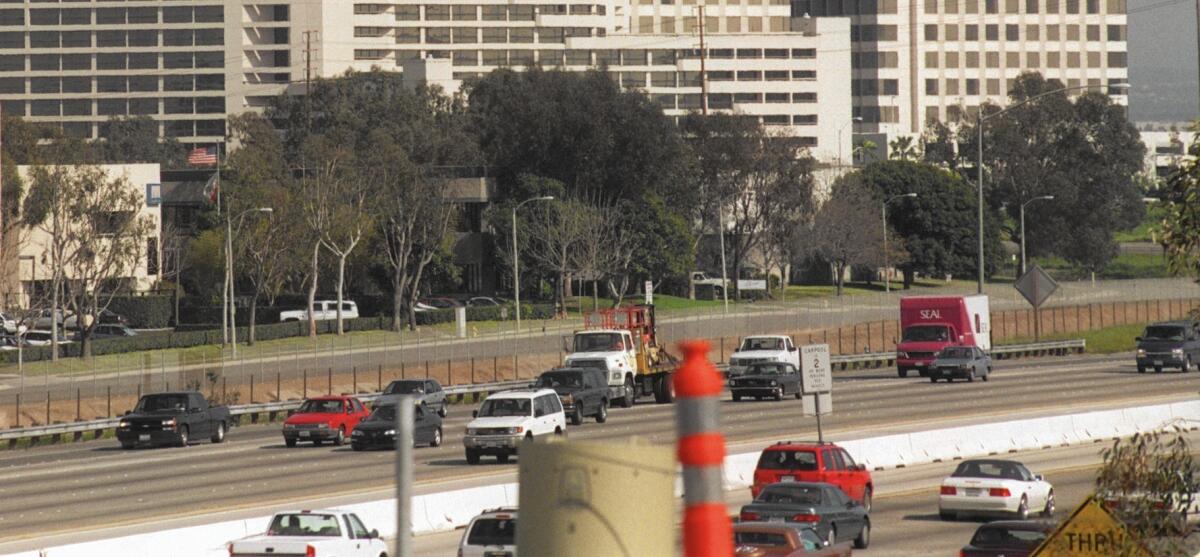Irvine residents get a look at proposed 405 widening

- Share via
Irvine residents and commuters who use the 405 Freeway on an 8-mile stretch through the city had a first look at a proposed freeway widening project that could take 10 years to get started.
The Orange County Transportation Authority and the California Department of Transportation offered a three-hour information session Tuesday night at Irvine’s University Community Park. Dozens of local residents and others interested in the project attended.
The project would add one or two lanes to both the northbound and southbound 405 between the 55 Freeway and the 5 Freeway interchange near the Irvine Spectrum Center.
“What is the time schedule, when do they plan to do this?” Carolyn Lundberg, 59, of Irvine wanted to know. “And can they justify the need for it in the zone they’re prospecting?”
Lundberg, who lives on the north side of the 405 where there is no sound wall, said she is concerned about traffic noise and wonders when construction will take place if the project is approved.
“The last time OCTA and Caltrans did a project out there, they worked from 10 p.m. to 5 a.m. for the better part of every night for three months,” Lundberg said. “When are those of us that work in daylight supposed to be able to sleep?”
Organizers staged the meeting room with 10 stations addressing the project’s purpose and scope. An OCTA spokesman pointed out that the freeway widening is only in the proposal stage, and he said inviting the community to participate is a key component to what will ultimately be a Caltrans decision on whether the project moves forward.
“We have a current need to improve our freeways, and we certainly are forecasting a future need and we have to address that,” said OCTA community relations officer Fernando Chavarria. “We’re studying options on how to best do that and to do it with minimal impact to the community.”
Irvine Mayor Pro Tem Jeff Lalloway, who also is chairman of the OCTA board, said: “Caltrans owns these roads and so is ultimately responsible for approving our choice with whatever we do on the 405. We have to look at all the stakeholders to make sure everyone is on the same page and agrees with what we’re doing. Ultimately we’re trying to improve transportation for the residents of Orange County.”
Lundberg said that along with her concerns about freeway noise and construction, she is looking at the bigger picture of transportation throughout the county. She said she would like to see OCTA explore all options, including expanding the Metrolink commuter rail schedule to encourage more people to ride the train.
“Of course, the more cars you have out there, the more pollution we have. There’s no getting around that,” said Lundberg, an ergonomics consultant. “We just don’t need to be making more roads to encourage people to put more cars on the highway.”
Lalloway replied that “converting people from driving in their cars to taking a train, here in Southern California, is always a difficult proposition. People here love to ride in their cars, and we need to improve all forms of transportation.”
Some of the funding for the project would come from the Measure M initiative, a half-cent sales tax for transportation projects passed by county voters in 2006. Other funding could come from federal Department of Transportation grants.
“The only phase that is currently funded is the environmental phase. We have no funding for design, nor is there funding for construction,” Chavarria said. “It’s a long-term project. This (environmental) process is two years. Construction probably wouldn’t start any sooner than 2023 or 2025.”